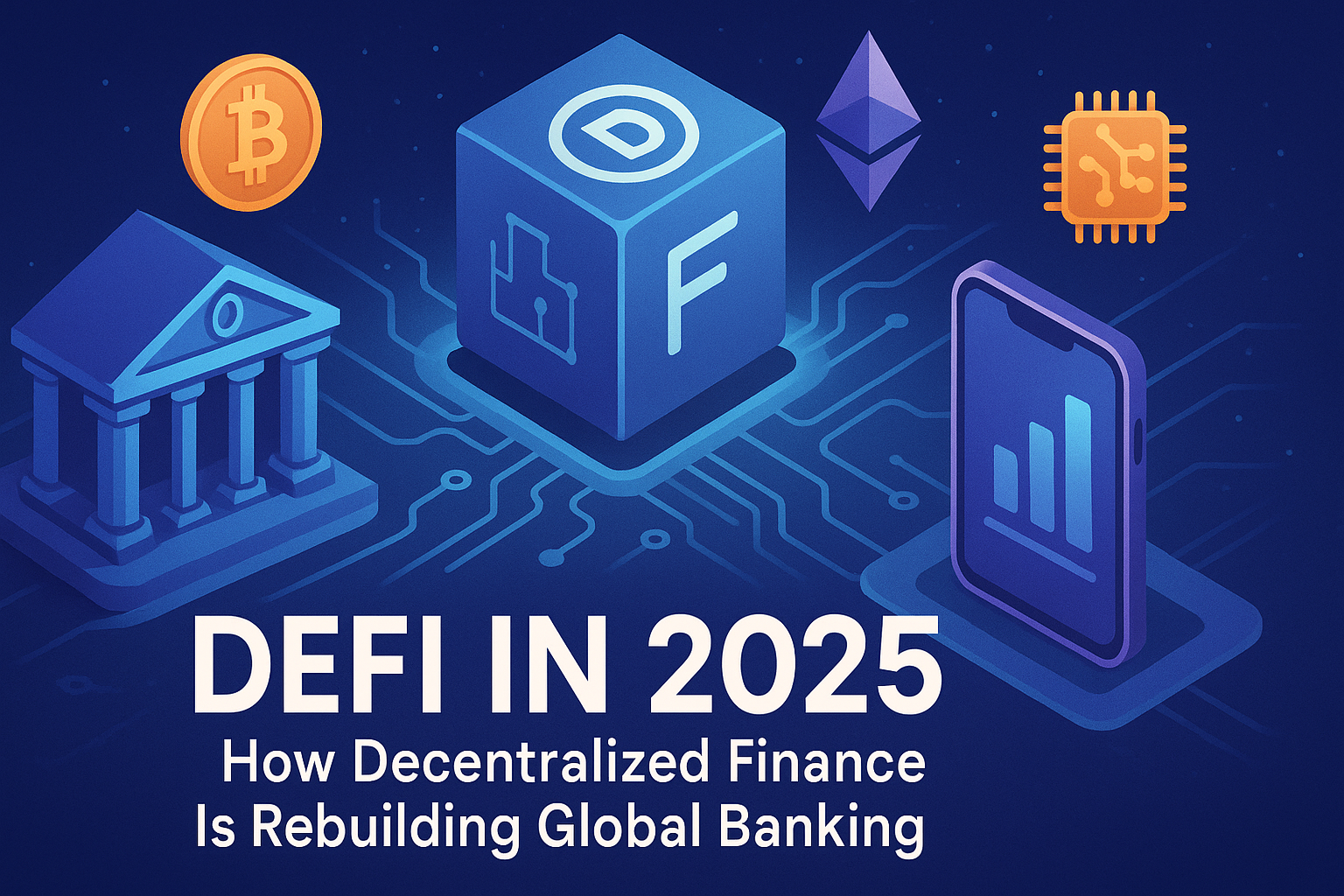DeFi in 2025: How Decentralized Finance Is Rebuilding Global Banking

DeFi Beyond Hype: Rebuilding Finance Through Code in 2025
The decentralized finance (DeFi) sector has undergone a quiet transformation. Once defined by yield farming frenzies and unsustainable tokenomics, DeFi in 2025 is maturing into a powerful, code-driven alternative to traditional finance. The market is no longer impressed by double-digit APYs alone. Today, it’s all about sustainability, security, and real-world use.
At its core, DeFi remains true to one principle: removing intermediaries. But unlike the experimental phase of 2020–2022, today’s protocols are shaped by deeper architectural thinking. Smart contracts are no longer just tools for lending and swaps — they are programmable financial systems with governance, self-correction, and modular design.
One of the major shifts is the rise of composable ecosystems.
DeFi protocols now talk to each other in highly structured ways. A lending platform can integrate directly with a yield optimizer, which feeds data from an oracle governed by a DAO. These Lego-like connections form dynamic financial layers — decentralized, yet stable.
Regulatory tension has also refined the industry.
In 2025, most successful DeFi projects are not anonymous anymore. Protocols are adopting compliance layers voluntarily — like zero-knowledge KYC or wallet-level permissioning — without compromising decentralization. It’s a hybrid model where trustless technology meets legal responsibility.
Security has become paramount.
Multi-sig governance, formal code audits, on-chain insurance funds, and real-time monitoring are no longer optional — they’re expected. The hacks of earlier years taught the industry a hard lesson: decentralization doesn’t mean chaos.
Another rising trend is localized DeFi — protocols built for regional needs.
In emerging markets, DeFi is solving real financial bottlenecks: cross-border remittances, microloans, community-based savings, and stable assets pegged to local currencies. Unlike speculative platforms, these projects are quietly onboarding millions.
Finally, the user experience has evolved.
Wallets are more intuitive, gasless transactions are spreading, and Layer 2 adoption has made DeFi faster and cheaper. Users don’t need to be developers anymore. They only need trust in the system — and that trust is being earned, line by line, in transparent code.
Conclusion
DeFi in 2025 isn’t about hype or memes — it’s about code replacing institutions. It’s a slow, deliberate rebuilding of global finance from the bottom up. For those paying attention, the revolution is not coming. It’s already being deployed, block by block.